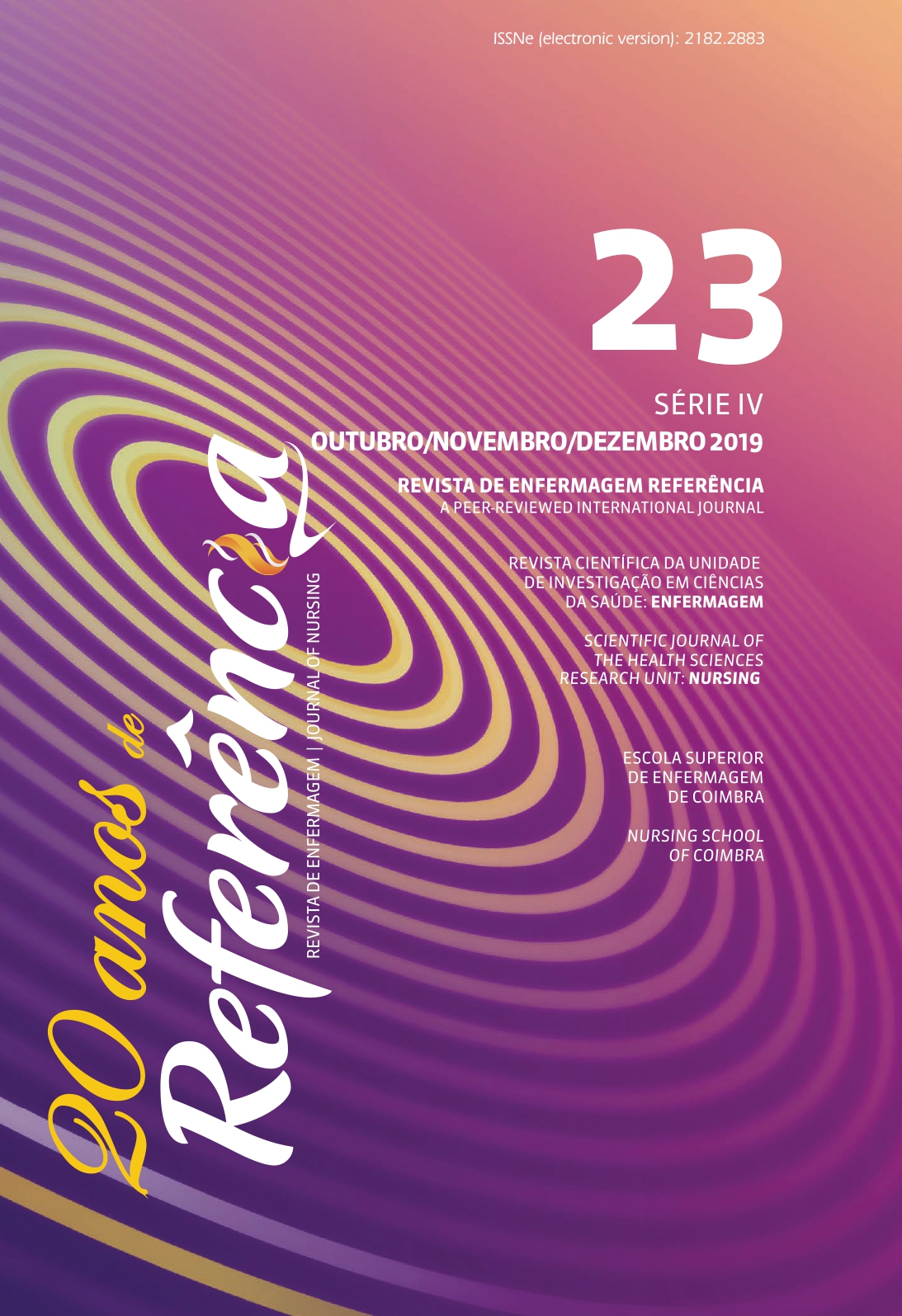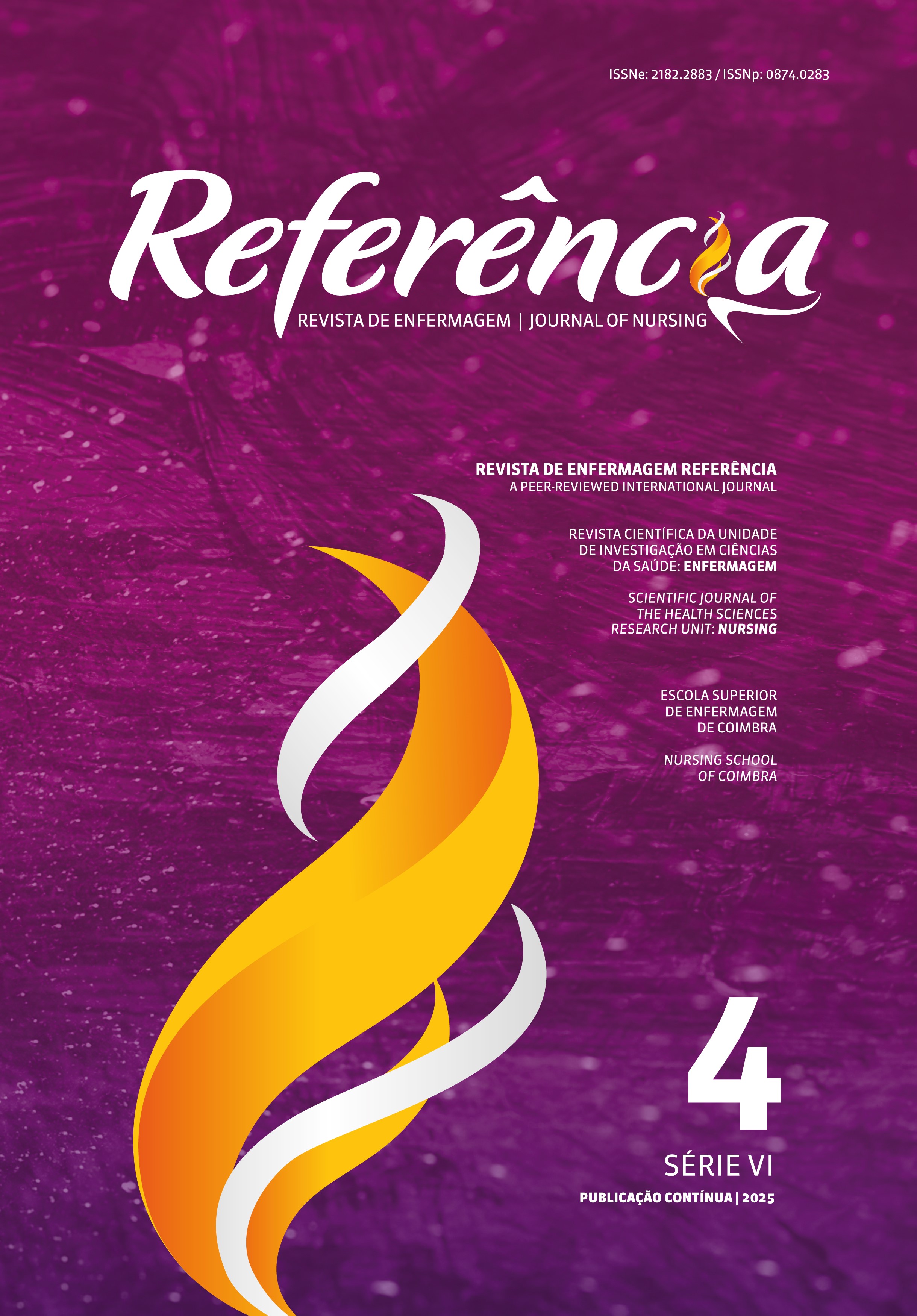Effectiveness of the breath-stacking technique in the respiratory function of women undergoing bariatric surgery
DOI:
https://doi.org/10.12707/RIV19046Keywords:
obesity, respiratory system, pulmonary ventilation, rehabilitation nursingAbstract
Background: Upper abdominal surgery is associated with a high incidence of pulmonary complications. The breath-stacking (BS) technique is considered a resource with therapeutic potential for rehabilitation nursing.
Objective: To assess the effectiveness of the BS technique in improving the respiratory function.
Methodology: Quasi-experimental study with 36 women undergoing bariatric surgery, distributed into a control group (CG)and an intervention group (IG). The forced vital capacity (FVC), the forced expiratory volume in one second (FEV1), the maximal inspiratory pressure (MIP), the maximal expiratory pressure (MEP), the peripheral oxygen saturation (SpO2), and the respiratory rate (RR) were evaluated in the pre and postoperative periods. The BS technique was applied to the IG in the pre and postoperative periods. Both descriptive and inferential statistics were used.
Results: Statistically significant postoperative differences were observed between the CG and the IG in FVC (-20.29 vs. -13.60), FEV1 (-23.05 vs. -13.38), MIP (-22.96 vs. -14.93), MEP (-14.10 vs. -10.32), and RF (12.29 vs. 6.45).
Conclusion: The BS technique improved the respiratory function of the IG and reversed the predictable changes in the postoperative period of bariatric surgery.
Downloads
References
Barcelar, J. (2011). Avaliação da eficácia da técnica de breath stacking em mulheres obesas mórbidas quanto à distribui¬ção de ventilação regional na caixa torácica (Dissertação de mestrado). Universidade Federal de Pernambuco. Recuperado de https://repositorio.ufpe.br/hand¬le/123456789/9098
Barcelar, J., Aliverti, A., Rattes, C., Ximenes, M. E., Campos, S. L., Brandão, D. C., … de Andrade, A. D. (2014). The expansion of the pulmonary rib cage during breath stack¬ing is influenced by age in obese women. PLoS ONE, 9(11), e110959. doi:10.1371/journal.pone.0110959
Costa, D., Barbalho, M., Miguel, G., Forti, E., & Azevedo, J. (2008). The impact of obesity on pulmonary function in adult women. Clinics, 63(6), 719–724. doi: 10.1590/ S1807-59322008000600002
Dias, C., Plácido, T., Ferreira, M., Guimarães, F., & Mene¬zes, S. (2008). Incentive spirometry and breath stack¬ing: Effects on the inspiratory capacity of individuals submitted to abdominal surgery. Brazilian Journal of Physical Therapy, 12(2), 94–99. doi:10.1590/S1413- 35552008000200004
Ebeo, C., Benotti, P., Byrd, R., Elmaghraby, Z., & Lui, J. (2002). The effect of bi-level positive airway pressure on postoperative pulmonary function following gastric sur¬gery for obesity. Respiratory Medicine, 96(9), 672–676. doi:10.1053/rmed.2002.1357
Formiguera, X., & Cantón, A. (2016). Obesity: Epidemiol¬ogy and clinical aspects. Best Practice & Research. Clinical Gastroenterology, 18(6), 1125–1146. doi:10.1016/j. bpg.2004.06.030
Jenkins, H., Stocki, A., Kriellaars, D., & Pasterkamp, H. (2014). Breath stacking in children with neuromuscu¬lar disorders. Pediatric Pulmonology, 49(6), 544–553. doi:10.1002/ppul.22865
Joris, J., Hinque, V., Laurent, P., Desaive, C., & Lamy, M. (1998). Pulmonary function and pain after gastroplasty performed via laparotomy or laparoscopy in morbidly obese patients. British Journal of Anaesthesia, 80(3), 283–288. doi: 10.1093/bja/80.3.283
McKim, D., Katz, S., Barrowman, N., Ni, A., & LeBlanc, C. (2012). Lung volume recruitment slows pulmonary function decline in Duchenne muscular dystrophy. Archives of Physical Medicine and Rehabilitation, 93(7), 1117–1122. doi:10.1016/j.apmr.2012.02.024
Nguyen, N., Lee, S., Goldman, C., Fleming, N., Arango, A., McFall, R., & Wolfe, B. (2001). Comparison of pulmo-nary function and postoperative pain after laparoscopic versus open gastric bypass: A randomized trial. Journal of the American College of Surgeons, 192(4), 467–469. doi:10.1016/s1072-7515(01)00822-5
World Health Organization. (2016). Obesity. Recuperado de http://www.euro.who.int/en/health-topics/noncommu-nicable-diseases/obesity
Overend, T., Anderson, C., Lucy, D., Bhatia, C., Jonsson, B., & Timmermans, C. (2001). The effect of incentive spi-rometry on postoperative pulmonary complications: A systematic review. Chest, 120(3), 971–978. doi:10.1378/ chest.120.3.971
Paisani, D., Chiavegato, L., & Faresin, S. (2005). Volumes, capacidades pulmonares e força muscular respiratória no pós-operatório de gastroplastia. Jornal Brasileiro de Pneumologia,, 31(2), 125–132. doi:10.1590/S1806- 37132005000200007
Pelosi, P., & Gregoretti, C. (2010). Perioperative manage¬ment of obese patients. Best Practice & Research. Clin¬ical Anaesthesiology, 24(2), 211–225. doi:10.1016/j. bpa.2010.02.001
Piper, A., & Grunstein, R. (2010). Big breathing: The complex interaction of obesity, hypoventilation, weight loss, and respiratory function. Journal of Applied Phys¬iology, 108(1), 199–205. doi:10.1152/japplphysi¬ol.00713.2009
Rafiq, M., Bradburn, M., Proctor, A., Billings, C., Bianchi, S., McDermott, C., & Shaw, P. (2015). A preliminary randomized trial of the mechanical insufflator-exsuffla¬tor versus breath-stacking technique in patients with amyotrophic lateral sclerosis. Amyothrophic Lateral Sclerosis and Frontotemporal Denegeration. 16(7–8), 448–455.
Reolon, V., Casagrande, J., Lorenzon, I., & Kessler, A. (2009). Treinamento muscular ventilatório por brea¬th-stacking em indivíduos jovens e hígidos. Recuperado de http://www.pucrs.br/edipucrs/XSalaoIC/Cien-cias_da_Saude/Fisioterapia_e_Terapia_Ocupacional/ 71493-VITORIO_ORTIZ_REOLON.pdf
Sanches, G., Gazoni, F., Konishi, R., Guimarães, H., Ven¬drame, L., & Lopes, R. (2007). Cuidados intensivos para pacientes em pós-operatório de cirurgia bariátrica. Revista Brasileira de Terapia Intensiva, 19(2), 205-209. doi:10.1590/S0103-507X2007000200011
Serejo, L., da Silva-Júnior, F., Bastos, J., de Bruin, G., Mota, R., & de Bruin, P. (2007). Risk factors for pulmonary complications after emergency abdominal surgery. Respiratory Medicine, 101(4), 808–813. doi:10.1016/j. rmed.2006.07.015
Toussaint, M., Boitano, L. J., Gathot, V., Steens, M., & Soudon, P. (2009). Limits of effective cough-augmen¬tation techniques in patients with neuromuscular dis¬ease. Respiratory Care, 54(3), 359–366. Recuperado de https://pdfs.semanticscholar.org/35bf/fd3eb178502e¬5fa96575d6917e087c20a3b6.pdf






















